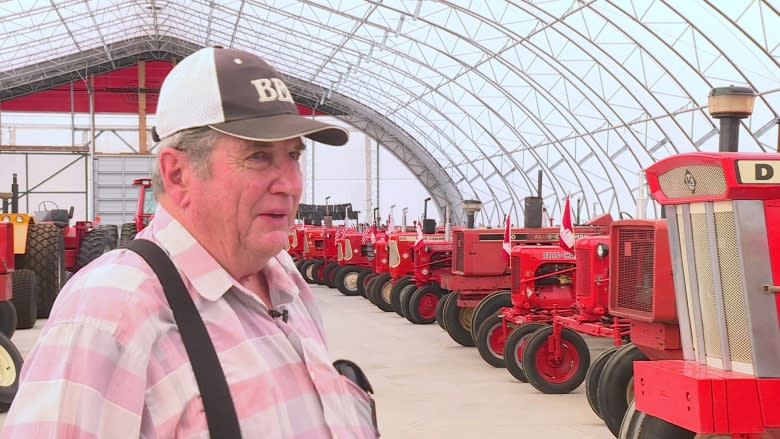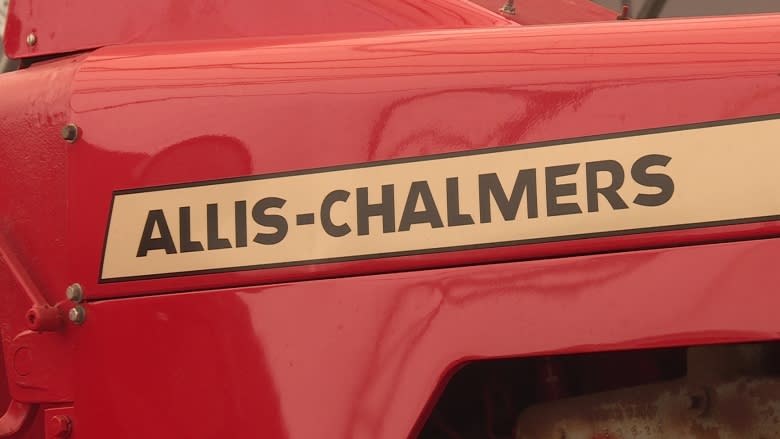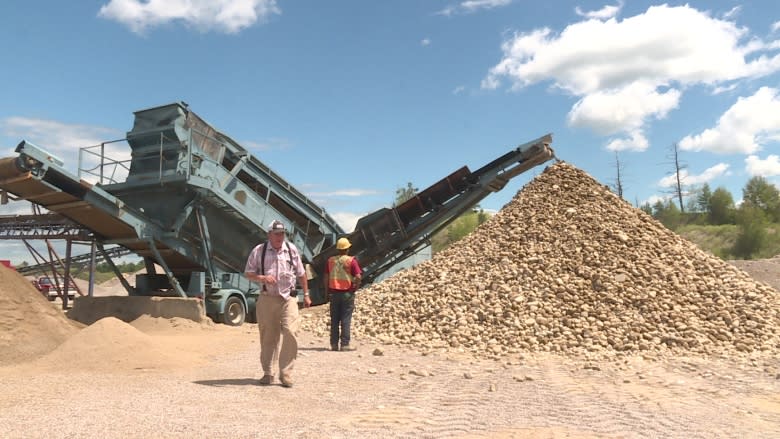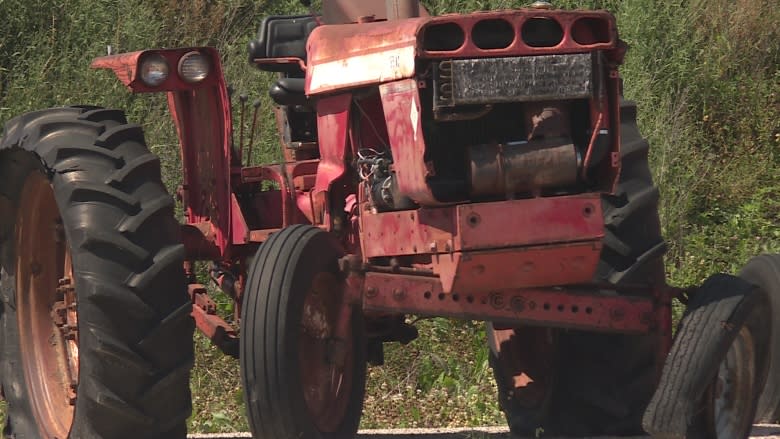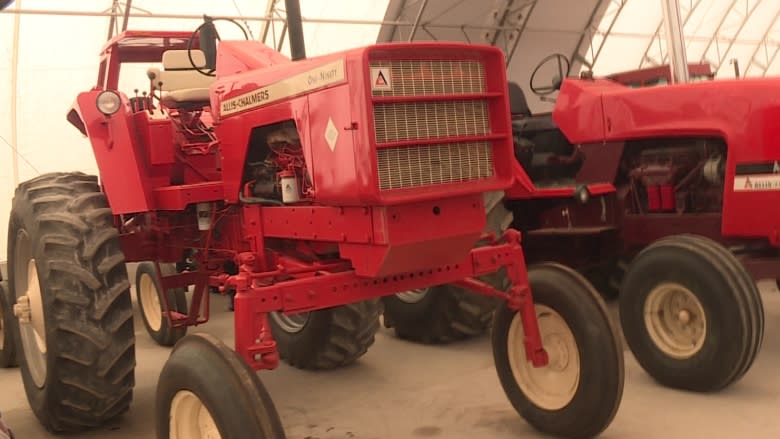Out of a farming tragedy came the world's largest Allis-Chalmers tractor collection
As a seven-year-old boy growing up on a farm near Renfrew, Ont., George Nesbitt would read his father's farming magazines admiring the pictures of the tractors advertised inside.
One day, unbeknownst to his father, young George filled out a request for literature from Allis-Chalmers, a manufacturer of tractors, and mailed it away.
A few weeks later, a salesman from Allis-Chalmers travelled over 100 kilometres to the farm and asked the farmer to speak with George Nesbitt.
"There is a George Nesbitt here, but he's only seven years old," replied the confused farmer.
"My dad and him had a bit of a laugh," recalled Nesbitt, now 73. "So, I got literature and I wore it out, reading it. That hooked me on Allis-Chalmers."
In 1962 Nesbitt, then 20 years old, started farming on his own and called the same dealer to purchase three pieces of Allis-Chalmers equipment.
Today, Nesbitt's collection of the orange brand from Milwaukee numbers more than 300 pieces and could be worth $5 million.
But, getting there wasn't easy.
Fire destroyed entire herd of dairy cows
Just two years into farming on his own, tragedy struck when an electrical short in his barn started a fire that destroyed the building and killed his family's entire herd of dairy cows.
"It was devastating. And of course you worked on borrowed money for years and years and years," he recalled.
He drove a tractor to a distant area in the back of his property to dig a hole large enough to bury the remains of the cattle.
The gravel and multi-coloured river stone he found when he dug that hole became the bedrock of Nesbitt Aggregates, a company that will turn 50 next year.
Nesbitt abandoned dairy farming and began selling the decorative stone and gravel.
Nesbitt soon earned a reputation for the superior uniform igneous river stone that geologists said had spread south from an ancient seabed in the James Bay area.
He and his family developed washing, sorting, and stone-splitting processes that created high-end markets for the aggregate.
Nesbitt rock used across North America
Now, river stone from the 4-hectare quarry can be found at the Canadian Embassy in Washington, D.C., the Tiger Stadium in Detroit, the National Arts Centre in Ottawa, the Canada Museum of History, the Toronto Public Library and the West Edmonton Mall.
Uniform, baseball-sized river stone from Renfrew was used in a house built by Madonna, and another by Tim "The Tool man" Allen.
The Nesbitt aggregate is predominately white, red and black. The larger granite pieces are hard and durable, naturally rounded from glacial "river washing" over thousands of years.
Because granite sand from the quarry absorbs very little moisture, it resists fracturing during winter freezing.
"It's hard to get good sand, the right gradation that they want," said Nesbitt.
Aggregate from the business outside of Renfrew was specified for the masonry upgrades being undertaken at the Parliament buildings in Ottawa.
Several times each week a truck is dispatched to pick up specially graded sand from the quarry.
Quarry employees help restore tractors
The success of the business meant Nesbitt was able to return to his first love — Allis-Chalmers tractors. He began seriously collecting agricultural equipment from the then-defunct Wisconsin company in the late 90s.
He has since amassed the world's largest collection of Allis-Chalmers tractors and equipment, about 400 pieces in total which he restores and displays in three bright buildings at the quarry each covering about half an acre.
Many have been restored by the quarry employees during the slow winter months, a process that can cost as much as $40,000.
Some of the tractors he prefers to leave in their as-acquired condition, with worn paint and rust in what Nesbitt likes to call their "working clothes".
"Just a kind of a sickness you get," he joked about his collection.
Nesbitt said he is weighing his options for the business and the collection as he considers retirement.
"I always said, if I died, the funeral would be in the morning and the auction in the afternoon."

